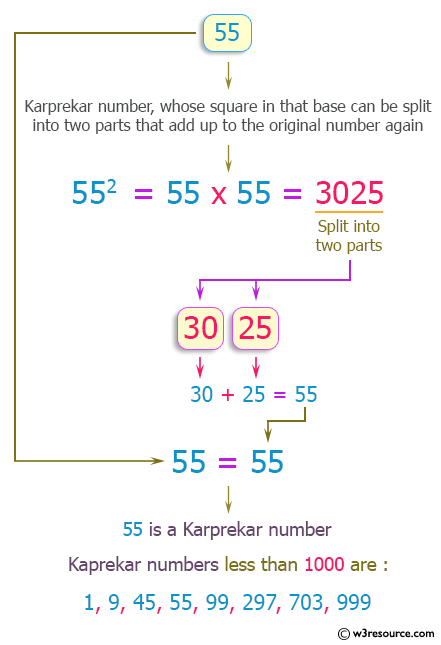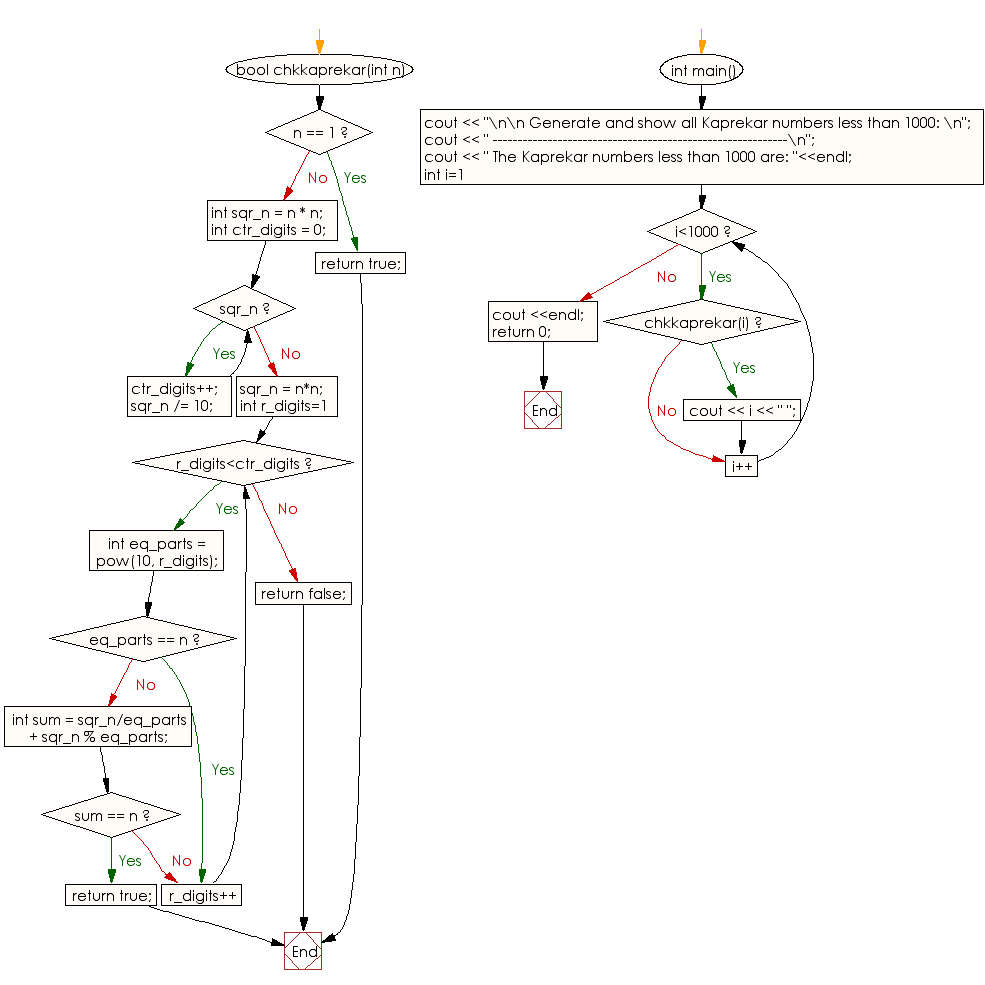C++ Exercises: Generate and show all Kaprekar numbers less than 1000
10. Show All Kaprekar Numbers Less Than 1000
Write a program in C++ to generate and show all Kaprekar numbers less than 1000.
Visual Presentation:

Sample Solution:
C++ Code :
#include<bits/stdc++.h> // Include the entire standard C++ library
using namespace std;
bool chkkaprekar(int n)
{
if (n == 1)
return true; // If the number is 1, it's considered a Kaprekar number
int sqr_n = n * n; // Calculate the square of the number
int ctr_digits = 0; // Variable to count the number of digits in the square
// Calculate the number of digits in the square of n
while (sqr_n)
{
ctr_digits++; // Increment the digit count
sqr_n /= 10; // Reduce the number by one digit
}
sqr_n = n * n; // Reset sqr_n to n squared
for (int r_digits = 1; r_digits < ctr_digits; r_digits++)
{
int eq_parts = pow(10, r_digits); // Determine the equal parts for the comparison
if (eq_parts == n)
continue; // If equal parts match the number, skip the comparison
// Calculate the sum of two parts after splitting the square number
int sum = sqr_n / eq_parts + sqr_n % eq_parts;
if (sum == n)
return true; // If the sum matches the original number, it's a Kaprekar number
}
return false; // If no condition satisfies, it's not a Kaprekar number
}
int main()
{
cout << "\n\n Generate and show all Kaprekar numbers less than 1000: \n"; // Display a message for user
cout << " -----------------------------------------------------------\n";
cout << " The Kaprekar numbers less than 1000 are: " << endl;
// Check for Kaprekar numbers in the range from 1 to 999 and display them
for (int i = 1; i < 1000; i++)
{
if (chkkaprekar(i))
{
cout << i << " "; // Print the Kaprekar number
}
}
cout << endl;
return 0; // End of the program
}
Sample Output:
Generate and show all Kaprekar numbers less than 1000: ----------------------------------------------------------- The Kaprekar numbers less than 1000 are: 1 9 45 55 99 297 703 999
Flowchart:

For more Practice: Solve these Related Problems:
- Write a C++ program to list all Kaprekar numbers below 1000 using a for-loop with efficient digit splitting.
- Write a C++ program to generate Kaprekar numbers under 1000 while optimizing performance with early termination.
- Write a C++ program to display all Kaprekar numbers below 1000 using vector storage and STL iterators.
- Write a C++ program to list Kaprekar numbers under 1000 using lambda expressions for clarity and brevity.
Go to:
PREV : Kaprekar Number Check.
NEXT : Lychrel Number Check.
C++ Code Editor:
Contribute your code and comments through Disqus.
What is the difficulty level of this exercise?
